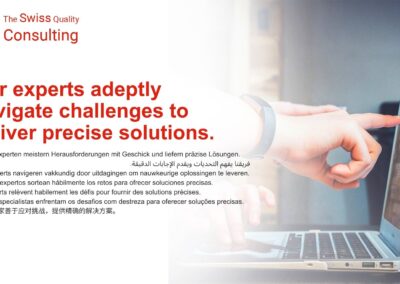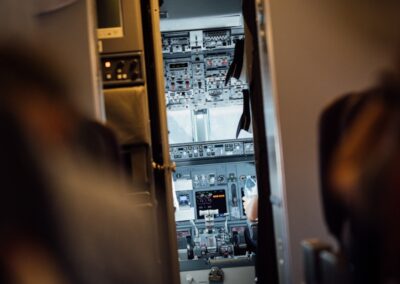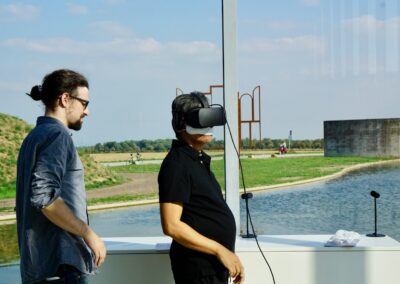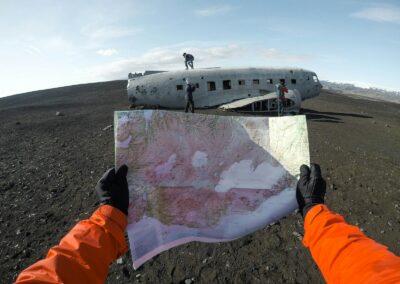Revolutionizing Navigation with Augmented Reality
AR navigation support in complex environments is transforming how individuals navigate large and intricate spaces such as airports, shopping malls, and stadiums. As augmented reality (AR) technology advances, it offers innovative solutions to enhance user experience by providing real-time, interactive navigation aids. In regions like Saudi Arabia and the UAE, where technological adoption is accelerating, AR navigation systems are becoming integral to improving the efficiency and convenience of public and private spaces.
AR navigation applications utilize digital overlays to provide step-by-step directions, highlight points of interest, and offer contextual information directly on users’ devices. This technology leverages data from various sources, including GPS, indoor positioning systems, and visual markers, to create accurate and reliable navigation guides. For instance, in airports, AR can guide travelers from check-in counters to boarding gates, displaying estimated walking times, security checkpoints, and amenities along the way. This reduces confusion and stress, particularly in large international hubs like King Khalid International Airport in Riyadh or Dubai International Airport.
In shopping malls, AR navigation enhances the retail experience by directing shoppers to specific stores, restaurants, or services. Interactive maps can show promotions, store hours, and product availability, making shopping more efficient and enjoyable. For stadiums, AR can assist attendees in locating their seats, restrooms, concession stands, and emergency exits, enhancing safety and convenience during events. By integrating AR navigation into these environments, businesses can improve customer satisfaction and operational efficiency.
Implementing AR Navigation in Airports
The implementation of AR navigation support in complex environments such as airports involves several critical considerations. Airports are bustling with activity and often cover vast areas, making efficient navigation crucial for passengers. AR technology can provide a seamless and intuitive wayfinding solution that addresses the unique challenges of airport environments.
Firstly, integrating AR navigation requires robust infrastructure, including reliable Wi-Fi, Bluetooth beacons, and indoor positioning systems. These technologies enable accurate tracking and positioning of users within the airport, ensuring that AR overlays are precise and helpful. In major airports in Saudi Arabia and the UAE, such infrastructure investments are increasingly prioritized to enhance passenger experience and streamline operations.
Secondly, the user interface of AR navigation apps must be designed with simplicity and clarity in mind. Given the diverse demographics of airport users, including international travelers with varying levels of tech-savviness, the app should offer multilingual support and intuitive controls. For example, AR navigation apps can use visual and audio cues to guide users, ensuring accessibility for individuals with visual or hearing impairments.
Lastly, collaboration with airport authorities and stakeholders is essential to keep the AR navigation system up-to-date with real-time information. This includes flight schedules, gate changes, and security alerts. By maintaining a dynamic and responsive AR navigation system, airports can significantly reduce passenger anxiety and enhance overall travel experience.
Enhancing Shopping Malls with AR Navigation
Shopping malls present another ideal setting for AR navigation support in complex environments. These sprawling retail spaces can be overwhelming for shoppers, especially during peak hours or sales events. AR navigation can revolutionize the shopping experience by providing personalized and interactive wayfinding solutions.
AR navigation apps in shopping malls can feature interactive maps that highlight stores, dining options, and entertainment venues. These maps can be customized based on user preferences, showing promotions and deals from their favorite brands. For instance, a shopper looking for a specific item can receive directions to the nearest store that stocks it, along with information about ongoing discounts or special offers. In cities like Dubai, renowned for its luxury shopping destinations, such personalized navigation aids can significantly enhance the retail experience.
Moreover, AR navigation can support operational efficiencies for mall management. By analyzing user data and movement patterns, mall operators can gain insights into foot traffic, popular routes, and areas of congestion. This information can inform decisions about store placements, promotional activities, and facility management. In Riyadh and other rapidly growing urban centers, such data-driven insights are invaluable for optimizing mall operations and enhancing shopper satisfaction.
Furthermore, AR navigation can integrate with loyalty programs, offering rewards and incentives to users as they navigate the mall. This not only encourages app usage but also fosters customer loyalty and engagement. By creating an interactive and rewarding shopping experience, malls can attract more visitors and drive higher sales.
Optimizing Stadium Experiences with AR Navigation
Stadiums and large event venues also benefit significantly from AR navigation support in complex environments. Navigating these vast spaces, especially during crowded events, can be challenging for attendees. AR navigation can provide clear and concise directions, ensuring a smooth and enjoyable experience for all.
In stadiums, AR navigation can guide attendees from entry points to their seats, restrooms, food and beverage stands, and emergency exits. Real-time updates can inform users about queue lengths, wait times, and available services, helping them make informed decisions and avoid congestion. For instance, during a major sporting event in Dubai or Riyadh, AR navigation can enhance the fan experience by providing seamless and interactive wayfinding.
Additionally, AR navigation can be integrated with ticketing systems, allowing users to receive personalized directions based on their seat locations. This reduces the confusion and frustration often associated with finding seats in large venues. For VIP guests, AR navigation can offer exclusive directions to premium lounges and services, enhancing their overall experience.
Stadium operators can also use AR navigation to improve safety and security. In case of emergencies, the system can provide real-time evacuation routes and instructions, ensuring that attendees can exit the venue quickly and safely. By enhancing navigation and safety, AR technology can contribute to a more enjoyable and secure event experience.
Conclusion: Embracing AR for Enhanced Navigation
AR navigation support in complex environments offers transformative potential for enhancing user experience in airports, shopping malls, and stadiums. By leveraging augmented reality, these spaces can provide intuitive, interactive, and personalized wayfinding solutions that cater to diverse user needs.
For business executives, mid-level managers, and entrepreneurs, investing in AR navigation technology represents an opportunity to lead in innovation and improve customer satisfaction. As AR technology continues to evolve, its application in complex environments will become increasingly sophisticated, offering new possibilities for enhancing efficiency, safety, and convenience.
By prioritizing user-centric design, robust infrastructure, and collaboration with stakeholders, organizations can successfully implement AR navigation systems that set new standards for excellence in navigation support. In regions like Saudi Arabia and the UAE, where technological advancements are rapidly reshaping various sectors, embracing AR navigation can drive significant benefits for businesses and consumers alike.
—
#ARNavigationSupport #ComplexEnvironments #Airports #ShoppingMalls #Stadiums #AugmentedReality #SaudiArabia #UAE #Riyadh #Dubai #ArtificialIntelligence #Blockchain #TheMetaverse #ExecutiveCoaching #ModernTechnology #LeadershipSkills #BusinessSuccess #ProjectManagement























